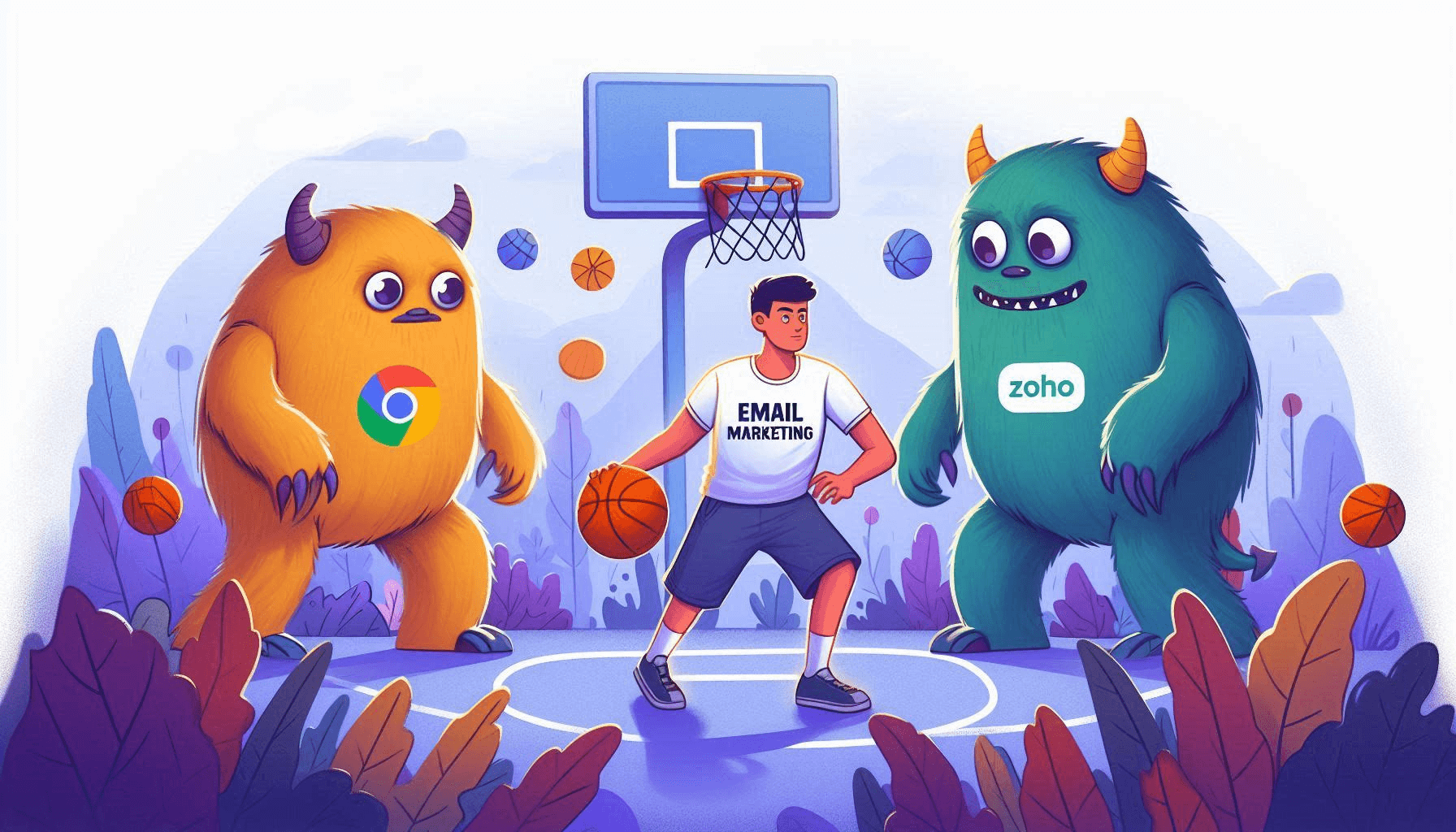How to Reduce Bounce Rate in Email Marketing
Introduction
Email marketing remains a critical strategy for connecting with audiences and prompting action. A pivotal metric to track for a campaign’s success is the bounce rate, which reflects the percentage of emails that were not successfully delivered to the recipient’s inbox. Reduction of this rate is imperative for achieving optimal engagement and ensuring deliverability of messaging to the intended audience.
Understanding Bounce Rate in Email Marketing
In the realm of email marketing, bounce rate signifies the rate at which emails are returned as undeliverable. Bounces are categorized into two types: hard bounces and soft bounces. Hard bounces occur when the email address is invalid, non-existent, or has been permanently closed, resulting in a permanent delivery failure. Soft bounces are temporary issues, such as a full inbox or a server down, which may resolve themselves over time. Meticulously tracking these metrics allows marketers to cleanse their email lists and enhance the quality of their campaigns, contributing to a more accurate measurement of engagement and interest from recipients.
The Impact of High Bounce Rates on Campaigns
High bounce rates can detrimentally affect the success of email marketing campaigns. They not only distort engagement metrics but can also tarnish sender reputation, leading to decreased deliverability rates and possible blacklisting by Internet Service Providers (ISPs). A high bounce rate is often indicative of outdated email lists, poor sender practices, or lack of adherence to deliverability best practices. It can result in wasted resources, as emails fail to reach their intended audience, and consequently, the return on investment (ROI) is diminished. By preventing high bounce rates, marketers can ensure that their content reaches the inbox, engages the target audience, and ultimately drives conversions.
Identifying the Causes of High Bounce Rates
Issues with Email Content
A critical factor contributing to high email bounce rates is content that fails to engage or is perceived as irrelevant by the recipient. Lack of personalization, unclear message, and subpar design are also common culprits. Excessive use of sales language can trigger spam filters or prompt recipients to dismiss the email immediately. Moreover, content that does not adapt to mobile devices can discourage readers from engaging with the message, further increasing bounce rates. It is imperative that email marketers craft content that resonates with their audience, using a responsive design and a tone that fosters a sense of value in the communication.
Problems with List Segmentation and Audience Targeting
Inaccurate list segmentation and inadequate audience targeting account for elevated bounce rates in email marketing. When emails reach individuals who have no interest in the products or services offered, this often leads to a swift deletion of the email or marking it as spam. To curb bounce rates, marketers must diligently maintain list hygiene, updating subscriber information and preferences regularly. Segmenting lists based on detailed criteria, such as demographics, past purchases, or engagement levels, allows for more precise targeting and enhances the relevance of the message for each recipient.
Technical Factors That Lead to Email Bounces
From a technical perspective, email bounces can be attributed to invalid email addresses, server issues, or aggressive spam filters. Marketers need to ensure that their email lists are updated and scrubbed of nonexistent or incorrect email addresses. Regular monitoring of email deliverability and engagement metrics provides insights into potential server or authentication problems. Improving sender reputation through consistent sending volumes and avoiding triggering spam filters through meticulous email construction are essential steps. It is crucial to use trusted email service providers and adhere to email sending best practices to minimize technical rejections and soft bounces.
Crafting Engaging Subject Lines
An effective subject line acts as a gateway to the content of an email, playing a crucial role in reducing bounce rates in email marketing. It draws the recipient’s attention and can significantly influence their decision to open the email. Given the plethora of emails flooding inboxes daily, a subject line has mere seconds to make an impact. Therefore, marketers must ensure their subject lines are intriguing and reflective of the email’s value proposition without being misleading.
The Importance of First Impressions
First impressions are imperative in email marketing. The subject line is the first encounter recipients have with an email and can determine if the content within gets viewed. A compelling subject line can lead to higher open rates and better engagement. An email with an irrelevant or uninteresting subject line is likely to be ignored or deleted, increasing bounce rates and potentially harming sender reputation over time. Therefore, subject lines should be crafted to capture attention and entice curiosity while aligning with the email content to maintain trustworthiness.
Tips for Writing Compelling Subject Lines
- Keep it concise: Aim for subject lines that are around 50 characters to ensure they are fully visible on most devices, particularly mobile screens.
- Employ personalization: Use the recipient’s name or relevant details to create a sense of individualized attention and connection.
- Provoke curiosity: Pose questions or present teasers that can only be answered or resolved by reading the email’s content.
- Convey urgency: Phrases that suggest time sensitivity can prompt immediate action, such as “Limited time offer” or “24-hour giveaway”.
- Optimize for relevance: Make sure the subject line accurately reflects the content of the email to establish credibility and avoid disappointment.
- Test and analyze: Implement A/B testing with different subject lines to gauge performance and understand preferences within your audience segment.
- Use language that resonates: Align the tone and vocabulary of the subject line with the target audience, whether it’s professional, academic, or conversational.
- Avoid spam triggers: Steer clear of using all caps, excessive exclamation marks, and spammy words that could trigger email filters.
By adhering to these tactics, marketers can craft subject lines that not only draw recipients in but also set the stage for a fulfilling email interaction that negates the chance of an immediate bounce. In-depth knowledge of the audience, along with continual testing and refinement of subject line strategies, is essential for sustaining reader engagement and trust.
Designing Responsive Email Templates
Designing responsive email templates is a critical step in mitigating high bounce rates. Users often access their emails through various devices, with differing screen sizes and resolutions. Templates must ensure readability and easy interaction, regardless of the device. Implementing fluid layouts that adapt to the screen, using scalable images and touch-friendly buttons are best practices. These elements contribute to a seamless user experience, encouraging recipients to engage with the content rather than closing the email prematurely.
Why Mobile-Friendly Emails Matter
The prevalence of mobile device usage for checking emails necessitates mobile-friendly designs. Statistics show overwhelming engagement rates from mobile users, with many consumers using their smartphones as a primary device for email communications. If an email does not display correctly on mobile, the recipient may delete it or mark it as spam, thereby increasing the bounce rate. Responsive design ensures that the email content is easily digestible on a small screen, which leads to higher engagement levels and a lower likelihood of users disregarding the email. Crafting these mobile-optimized emails not only enhances user experience but also strengthens sender reputation.
Creating Visually Appealing Layouts
A layout’s visual appeal holds power in captivating recipients’ attention and reducing bounce rates. To achieve this, marketers should employ a clean design with ample white space, ensuring content clarity and focus. This includes discernible headings, bullet points for key information, and concise calls to action. High-quality images should complement the text without overshadowing it. Typography also plays a role; using web-safe fonts at a readable size contributes to the overall aesthetics and readability. Visually appealing emails can lead to more extended interaction times, hence decreasing the probability of immediate exits and contributing to a healthier engagement metric.
Improving Email Content and Personalization
Creating Valuable and Relevant Content
Success in email marketing hinges on the provision of content that resonates with the intended audience. Subscribers prioritize emails that add tangible value to their lives, be it through knowledge, entertainment, or solutions to their problems. To craft content that reduces bounce rates, marketers must understand the audience’s interests, pain points, and preferences. High-quality content often includes tips, industry insights, how-to guides, and thought leadership pieces that position the sender as a knowledgeable source. Every email should serve a purpose and carry a clear message, whether educating the subscriber or providing them with exclusive benefits.
Emails must also be optimized for readability. This includes using a clean layout, concise language, and clear calls-to-action. Break down complex information into manageable pieces, use bullet points or numbered lists, and ensure that the content is accessible and easily digestible. Graphics and visuals can aid comprehension and retention. However, these elements should complement, not overshadow, the written content.
Utilizing Personalization to Increase Engagement
Personalization extends beyond addressing recipients by their names. It encompasses tailoring email content based on the subscriber’s past interactions, purchase history, and behavior. Dynamic content that alters according to the recipient’s data enhances relevance and fosters a more personal connection. Marketers can segment their email lists to deliver more targeted content. For example, sending location-specific information, or suggestions based on previous purchases, can markedly improve engagement.
Moreover, personalization should reflect in the timing and frequency of emails. Analyzing when subscribers are most likely to open and engage with emails allows marketers to schedule sendouts for maximum impact. Automated behavioral trigger emails, such as cart abandonment reminders or re-engagement offers, can significantly reduce bounce rates by catering to individual actions. Employing A/B testing on various email components, including subject lines and email layouts, helps in understanding what resonates best with different segments of the audience. Tracking and analyzing the performance of each email campaign informs ongoing personalization efforts, ensuring continuous improvement and a sustained reduction in bounce rates.
Optimizing Sending Time and Frequency
Finding the Best Time to Send Emails
Determining the optimal time to send emails is crucial in reducing bounce rates. Audiences interact with their inboxes differently, depending on various factors such as demographics, behavior patterns, and time zones. Marketers must gather data on when subscribers are most likely to open and engage with emails. This can be achieved through A/B testing different send times and analyzing engagement metrics. Many email marketing platforms provide analytics that tracks open rates and click-through rates, which marketers can use to identify patterns and establish the best time windows for their specific audience.
Striking the Right Balance with Email Frequency
Email frequency significantly impacts subscriber engagement. An inundation of messages can overwhelm recipients, prompting high bounce rates, while infrequent emails may lead to a disconnection with the brand. It’s essential to strike a balance by monitoring the performance of different sending frequencies. This can range from daily to bi-weekly, to monthly sends, depending on the audience’s preferences. Subscribers also appreciate being given control over how often they receive emails, so offering a preference center where they can customize their email frequency can help alleviate high bounce rates and maintain a healthy sender-subscriber relationship.
Segmentation and A/B Testing
Segmenting Your Email List for Better Targeting
Segmentation in email marketing refers to the process of dividing an email list into smaller, more focused groups based on criteria such as demographics, purchasing history, or engagement level. This practice allows marketers to send more personalized and relevant content to each segment, which often leads to increased levels of user engagement and, ultimately, a reduction in bounce rates. For instance, an email promoting baby products would resonate more with new parents rather than a segment of college students. Marketers can create segments using various data points, such as age, location, past purchases, and behaviors like email open rates and website interactions. Proper segmentation ensures that recipients receive content tailored to their interests and needs, greatly enhancing the likelihood of email retention and action.
Implementing A/B Testing to Improve Engagement
A/B testing, also known as split testing, is a method used to compare two versions of an email campaign to determine which one performs better in terms of open rates, click-through rates, and conversions. This technique involves sending one variation, the ‘A’ version, to half of a segmented list, and the ‘B’ version to the other half, with only one element changed between the versions. This could be anything from the subject line or email copy to images or call to action buttons. A/B testing provides concrete data on what resonates with the audience, allowing marketers to refine their email campaigns for better performance. Accurate A/B tests can reveal insights into audience preferences, drive higher engagement rates, and consequently decrease bounce rates by ensuring content remains relevant and appealing to the intended recipients. Analyzing the results from A/B testing helps in making data-driven decisions that align with the audience’s expectations and behaviors, leading to a more effective email marketing strategy.
Conclusion
Recap of Strategies to Reduce Bounce Rate
To effectively reduce the bounce rate in email marketing, businesses must engage in a multifaceted approach. They should start by ensuring the accuracy and cleanliness of their mailing list through regular scrubbing and validation processes. Segmentation should be employed to tailor content to different audiences, making the emails more relevant and engaging. Emails must be optimized for mobile devices, given the predominance of on-the-go email checking. The use of engaging subject lines, a balanced mix of visuals and text, and a clear call-to-action can also contribute to reducing the likelihood of emails being dismissed quickly. Moreover, personalization and automation can create a more intimate and timely experience for the recipient. Lastly, informative and high-quality content promotes longer engagement, driving the targeted consumers to interact more with the brand.
Encouraging Continuous Improvement and Monitoring
Long-term management of email bounce rates demands consistent monitoring and strategic adjustments. Deploying A/B testing can offer critical insights into which elements resonate best with the audience, thereby allowing marketers to iterate more effective campaigns. Analytics tools should be employed to track metrics such as open rate, click-through rate, and conversion rate, enabling marketers to pinpoint and address issues promptly. It is also crucial to stay updated with email marketing practices and adapt to any changes in email client algorithms or user behaviors. By adopting a culture of continual learning and improvement, businesses can refine their email marketing techniques, increase recipient engagement, and maintain a healthy sender reputation, all of which contribute to a lower bounce rate and enhanced campaign success.







